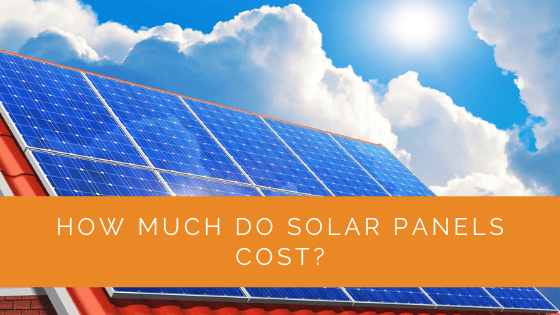For homeowners looking for ways to lower the electricity bills or a clean energy alternative, the thought of installing solar panels on your property has probably crossed your mind.
It makes a lot of sense – you can generate “free” electricity from sunlight. Why wouldn’t you?
Plus, the rising cost of electricity generated from conventional sources makes solar seem like a no-brainer for many property owners. And since the cost of solar panels keeps dropping every year, this is such a great time to make the switch to solar.
However, generally speaking, the true cost of solar and whether it will help you save money will depend on a few key factors. Generally speaking, a typical solar panel installation will run between $15,000 and $25,000, based on data from the Center for Sustainable Energy.
But before making the leap, you need to understand precisely how your location, electricity bills, and government incentives can influence the cost of solar over time.
Contents
- 1 Key Takeaways
- 2 What’s Included in the Cost of Solar Panels?
- 3 How Much Do Solar Panels Save?
- 4 Is the Cost of Solar Panels Falling?
- 5 What Influences the Price of Solar?
- 6 What Is the Process of Installing Solar Panels?
- 7 What Size Solar Panel System Do I Need?
- 8 How Many Solar Panels Will I Need?
- 9 Solar Panel Costs by State
- 10 What is the ROI of Solar Panels?
- 11 Should I Lease Solar Panels?
- 12 What Is the Average Return on Investment for Solar Panel Installation?
- 13 Experience Solar Excellence with Us!
- 14 Conclusion
Key Takeaways
- The cost of solar panels varies depending on factors like location, electricity bills, and government incentives. Typically, a residential solar panel installation can range from $15,000 to $25,000.
- The savings from solar panels depend on factors such as your roof’s size, sunlight exposure, and local electricity rates. On average, solar panels can pay for themselves in about 10 years.
- Solar panel costs have reduced substantially over time, primarily due to technological advancements and the benefits of mass manufacturing. The Department of Energy foresees further decreases in these costs, which is anticipated to lead to a notable increase in the number of homes equipped with solar panels in the near future.
What’s Included in the Cost of Solar Panels?
While sunlight is free, solar energy itself isn’t free. The area you live in will play a huge role in determining the price you pay. The sunnier the area, the higher the amount of electricity that a solar system can generate, and the more worthwhile it would be to install solar panels.
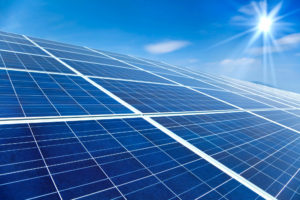 You also need to account for how much you spend on electricity, which will largely depend on your area’s utility rates. In case the rates are high, it adds to the value of installing solar panels.
You also need to account for how much you spend on electricity, which will largely depend on your area’s utility rates. In case the rates are high, it adds to the value of installing solar panels.
You’re going to spend some money initially to install solar panels. And the larger the system you need, the higher the cost per watt you’ll incur. Keep in mind that you most likely won’t cover 100% of your electricity requirements with solar power. You might still get a power bill even if some of your electricity gets generated by the sun.
However, tax incentives, utility company rebates, and other programs could help defray the cost of installing a solar power system. It will probably add thousands of dollars to the value of your home.
As the technology advances, the costs will increasingly go down, and as the best solar panel manufacturers continue to do larger-scale production, they will drop even more.
The world is increasingly becoming aware of the importance of renewable energy and the need to conserve power. And as the demand for energy goes up, mass manufacturing will increase, and the future of solar looks more promising.
How Much Do Solar Panels Save?
There are a few factors that influence how much you save when you switch to solar. This could fluctuate based on the specific details of your installation – the size and angle of your roof, the number of hours of direct sunlight you receive every day, and your local electricity rates.
One of the easiest ways to figure this out is to check your electricity bill. The typical American family will spend about $1,500 annually on electricity costs. As such, installing solar panels that cover up to 100% of your electricity needs will result in more than $100 in utility savings each month. This means that if your household is close to the average cost, the solar panels will pay for themselves in 10 years or less.
Don’t forget that utility rates increase on an annual basis. At the time of writing, they stand at around 2.2% per year. Generating electricity using solar panels will cost about the same each year. However, the solar panel system will last for many decades (on average 25 years), which means that you get 15 years of free energy with less impact on the environment.
Is the Cost of Solar Panels Falling?
In 2009, the cost to install solar panels was about $8.50 per watt. Today, more than a decade later, the solar industry looks very different. The efficiency of solar panels has increased dramatically, and the manufacturers have improved their production processes significantly.
Solar installers can deploy solar panel systems more efficiently now than they could a decade ago. The result of all this is that the price of installing solar has dropped to just $2.81 per watt.
Swanson’s Law can also explain the fall in price. Swanson’s Law states that the price of solar decreases by around 20% for every doubling of global solar capacity.
What Influences the Price of Solar?
There are a few key factors that determine precisely how much you will spend when installing solar panels to your home as listed below:
- The average energy usage and utility costs of your home
- The average local costs for solar panel systems in your locality
- The solar potential of your rooftop – the amount of sun your rooftop receives each year
- Rebates and local incentives you may receive for installing solar
- The average local labor costs in your area
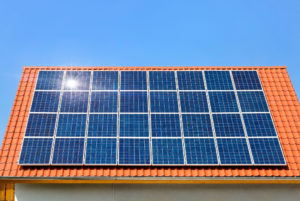 The Department of Energy anticipates a continued decrease in the cost of solar panel installations. This trend is expected to encourage more homeowners to opt for solar energy, with a significant number projected to install solar panels in their homes in the foreseeable future.
The Department of Energy anticipates a continued decrease in the cost of solar panel installations. This trend is expected to encourage more homeowners to opt for solar energy, with a significant number projected to install solar panels in their homes in the foreseeable future.
The Chinese government influenced the global solar market by investing low-cost financing into the sector. This made the solar costs drop significantly in the past few years and boosted solar panels’ manufacture by more than ten-fold.
While it’s possible to buy a solar panel for as low as $100, no solar panel operates in isolation. You need to have a software and hardware system to generate electricity you can use at home from the sun. This includes the mounting hardware, solar panels, cables and wires, monitoring software, and an inverter. You also need to consider the cost of installation and operation.
When you get an estimate for the cost of your solar panel system, you need to subtract what you save on your utility bills over time and any of the rebates and incentives provided by your state or local governments. This will enable you to have a better understanding of how going solar can impact your finances.
What Is the Process of Installing Solar Panels?
In a way, the due diligence you’re doing now is probably the most challenging part of solar panels installation. Getting an installation quote from your provider to the installation phase can take anywhere from one to four months. The process will generally involve six major steps:
Acquiring the Solar Equipment
The key pieces of equipment in a residential solar energy system are the solar panels and the inverters. Your installer will most likely make recommendations on both. However, most people find that understanding solar panels’ workings will generally make it easier to decide which panels will work best for them.
Site Visit
When you sign the contract with an installer, the first thing they will do is meet you at your home. In many cases, they will evaluate your roof to ensure that it can comfortably support the solar panels’ weight.
They will also check your circuit breaker of the electrical panel. When the engineer establishes your home can support a solar panel system installation, it’s now time to fill out the required forms.
Filling the Paperwork
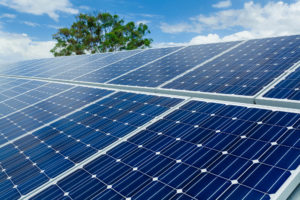 Your installer will likely handle most of the complex paperwork. It may include the state and federal rebates and tax incentives, PACE, and other financing initiatives for clean energy and solar renewable energy certificates (SRECs). However, it’s wise to know exactly what they are filing and where.
Your installer will likely handle most of the complex paperwork. It may include the state and federal rebates and tax incentives, PACE, and other financing initiatives for clean energy and solar renewable energy certificates (SRECs). However, it’s wise to know exactly what they are filing and where.
Besides helping you apply for the federal and state incentives, your installer will also know the local building restrictions and permits. They may even fill out the required paperwork on your behalf. When the paperwork is filed and approved, your installer will order the equipment you chose when signing the contract, and you will be added to their solar installation queue.
The Actual Installation
The installation of solar panels will only take a few days at most. The installer will first prep your roof to ensure that everything is intact from the first visit.
Next, they will install the wiring that connects your panels to your power system. Then, racking will be attached to your roof in order to support the individual panels that go on top of the racking.
Once this is done, the inverters, which convert the solar power to usable electricity, are connected to the panels.
Inspections and Assessments
Before you connect your new panels to the grid, someone from the local government will come and evaluate the installer’s work to approve it. At this point, they will look for any faulty wirings or violations to the roof and electrical setback codes.
Switch On
The last step is where your local electric company sends over their representative to connect your new solar panel system to their grid officially.
What Size Solar Panel System Do I Need?
The average home’s electricity usage stands at about 905 kWh per month or about 10,850 kWh per year. An average-sized home that receives a decent amount of sunshine per year could do with a 5 kW to 6 kW solar panel system to help lower utility bills.
But you will want first to learn a bit more about your sun number score for solar based on your home’s location and its average sunlight exposure.
Generally speaking, the larger the solar system you put up in your home, the lower your cost per watt becomes. The cost per watt, including the parts, solar panels, permits, labor costs, and overhead, will be between $6 a watt and $8 a watt.
The money saved on electricity bills can earn more than your initial installation costs between 7 and 20 years. Keep in mind that there are many incentives and rebates for solar available, and these could significantly speed up the time you get your return on investment.
You might even be able to sell the excess power you generate from your solar panels by net metering around your location.
How Many Solar Panels Will I Need?
To determine how many solar panels you need, you will want to start by determining how much electricity you typically use in your home and the types of solar panels you want installed.
You can calculate your household electricity usage by looking back at your electricity bills. Get your average kWh usage by adding up the stated kWh used in the past year and divide the number by 12. You can then divide this monthly average by 30 to calculate your daily average.
On average, homeowners need anywhere between 25 and 35 solar panels to produce enough solar energy to cover 100% of their electricity needs.
Generally speaking, a solar panel will produce about one kWh a day, meaning that if your home needs 30 kWh a day, you will need 30 solar panels. If you need more energy to power the air conditioning or heat a pool, this will add to your energy costs.
Solar Panel Costs by State
| State | Starting cost for 6-kW system | Average cost per watt | 2020 federal tax credit value (26%) | 2021 federal tax credit value (22%) |
|---|---|---|---|---|
| Alabama | $13,706 | $2.45 | $3,564 | $3,015 |
| Alaska | $13,454 | $2.41 | $3,498 | $2,960 |
| Arizona | $13,680 | $2.67 | $3,557 | $3,010 |
| Arkansas | $14,713 | $2.63 | $3,825 | $3,237 |
| California | $15,240 | $2.68 | $3,962 | $3,353 |
| Colorado | $17,100 | $2.44 | $4,446 | $3,762 |
| Connecticut | $15,540 | $2.86 | $4,040 | $3,419 |
| Delaware | $15,300 | $2.65 | $3,978 | $3,366 |
| Florida | $13,920 | $2.41 | $3,619 | $3,062 |
| Georgia | $15,840 | $2.33 | $4,118 | $3,485 |
| Hawaii | $19,560 | $2.67 | $5,086 | $4,303 |
| Idaho | $17,100 | $2.52 | $4,446 | $3,762 |
| Illinois | $16,740 | $2.57 | $4,352 | $3,683 |
| Indiana | $15,300 | $2.49 | $3,978 | $3,366 |
| Iowa | $14,160 | $2.53 | $3,682 | $3,115 |
| Kansas | $13,353 | $2.39 | $3,472 | $2,882 |
| Kentucky | $13,101 | $2.34 | $3,406 | $2,882 |
| Louisiana | $15,660 | $2.38 | $4,072 | $3,445 |
| Maine | $16,073 | $2.87 | $4,179 | $3,536 |
| Maryland | $15,540 | $2.74 | $4,040 | $3,419 |
| Massachusetts | $16,440 | $2.87 | $4,274 | $3,617 |
| Michigan | $16,020 | $2.66 | $4,165 | $3,524 |
| Minnesota | $17,280 | $2.74 | $4,493 | $3,802 |
| Mississippi | $14,763 | $2.64 | $3,838 | $3,248 |
| Missouri | $14,461 | $2.59 | $3,760 | $3,181 |
| Montana | $16,560 | $2.42 | $4,306 | $3,643 |
| Nebraska | $15,820 | $2.83 | $4,113 | $3,480 |
| Nevada | $14,760 | $2.61 | $3,838 | $3,247 |
| New Hampshire | $17,460 | $2.83 | $4,540 | $3,841 |
| New Jersey | $14,520 | $2.77 | $3,775 | $3,194 |
| New Mexico | $16,680 | $2.44 | $4,337 | $3,670 |
| New York | $15,900 | $2.86 | $4,134 | $3,498 |
| North Carolina | $14,040 | $2.49 | $3,650 | $3,089 |
| North Dakota | $13,555 | $2.42 | $3,524 | $2,982 |
| Ohio | $14,400 | $2.50 | $3,744 | $3,168 |
| Oklahoma | $14,667 | $2.62 | $3,813 | $3,227 |
| Oregon | $15,060 | $2.50 | $3,916 | $3,313 |
| Pennsylvania | $15,420 | $2.38 | $4,009 | $3,392 |
| Rhode Island | $16,200 | $2.69 | $4,212 | $3,564 |
| Sourth Carolina | $16,500 | $2.62 | $4,290 | $3,630 |
| South Dakota | $13,535 | $2.39 | $3,519 | $2,978 |
| Tennessee | $13,909 | $2.49 | $3,616 | $3,060 |
| Texas | $14,820 | $2.60 | $3,853 | $3,260 |
| Utah | $15,420 | $2.66 | $4,009 | $3,392 |
| Vermont | $16,620 | $2.85 | $4,321 | $3,656 |
| Virgina | $15,780 | $2.66 | $4,103 | $3,472 |
| Washington | $14,040 | $2.73 | $3,650 | $3,089 |
| West Virgina | $14,763 | $2.64 | $3,838 | $3,248 |
| Wisconsin | $17,580 | $2.60 | $4,571 | $3,868 |
| Wyoming | $14,360 | $2.57 | $3,734 | $3,159 |
Starting cost for 6-kW system is before tax credits, according to EnergySage and Solar Reviews
Average cost per watt is according to Solar Reviews
What is the ROI of Solar Panels?
You can determine the ROI of installing solar panels in your home by calculating your total payback. You can figure out the total amount you’ve spent to install the solar panel system and the amount you will save on your monthly utility bills.
The two figures will help you determine how quickly your savings can cover your initial costs. Keep in mind that a region’s electricity rates will vary and are generally higher around the Northeast areas than in the Northwest areas.
Plus, solar is usually more cost-effective when sunshine is abundant, and electricity prices are high.
Should I Lease Solar Panels?
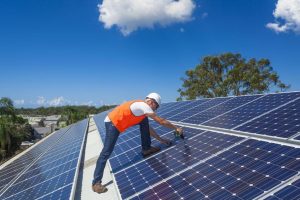 Solar panel leasing has become a popular way of transitioning to renewable energy. More people hope to save on their utility bills without paying the high initial cost of installing solar.
Solar panel leasing has become a popular way of transitioning to renewable energy. More people hope to save on their utility bills without paying the high initial cost of installing solar.
However, leasing has its drawbacks. You will most likely pay more over time when leasing, with costs ranging from $50 and $250 a month. As such, it only makes sense when you have higher-than-average energy bills.
Still, it’s worth considering that maintenance and monitoring are included with leasing. This could help give you peace of mind when switching to solar. However, with owning, you will likely get your total return on investment within ten years, which will save you significant amounts of money in the long run.
What Is the Average Return on Investment for Solar Panel Installation?
The return on investment for solar panel installation varies depending on several factors such as the size and angle of your roof, the number of hours of direct sunlight you receive every day, and your local electricity rates. On average, solar panels can pay for themselves in about 10 years. If you install solar panels that cover up to 100% of your electricity needs, you could save more than $100 in utility savings each month, which means that the solar panels will pay for themselves in 10 years or less. Additionally, utility rates increase on an annual basis, while generating electricity using solar panels will cost about the same each year. The solar panel system will last for many decades (on average 25 years), which means that you get 15 years of free energy with less impact on the environment.
Experience Solar Excellence with Us!
Trust in Solar Panels Network USA, where our seasoned experts deliver top-quality solar solutions for homes and businesses nationwide. With a legacy of countless successful installations and a commitment to sustainable energy, we’re your reliable partner in the solar journey. Ready for a brighter, eco-friendly future? Call us now at (855) 427-0058 and harness the power of the sun!
Conclusion
If you’re considering installing solar panels in your home, this article is hopefully a great starting point for you to help you determine how much it will cost you to make the switch to solar.
In general, the total cost of installing a residential solar panel system before rebates and tax credits is comparable to the price of a new car. If you can afford the investment and live in an area with high energy rates and an excellent solar rating, installing solar is probably a no brainer.
Be sure to shop around and look for incentives. Don’t forget that you don’t even have to buy solar panels, you can lease them too at a lower upfront cost.
About the Author
Solar Panels Network USA stands at the forefront of solar energy solutions, driven by a team of seasoned solar engineers and energy consultants. With over decades of experience in delivering high-quality solar installations and maintenance, we are committed to promoting sustainable energy through customer-centric, tailored solutions. Our articles reflect this commitment, crafted collaboratively by experts to provide accurate, up-to-date insights into solar technology, ensuring our readers are well-informed and empowered in their solar energy decisions.

